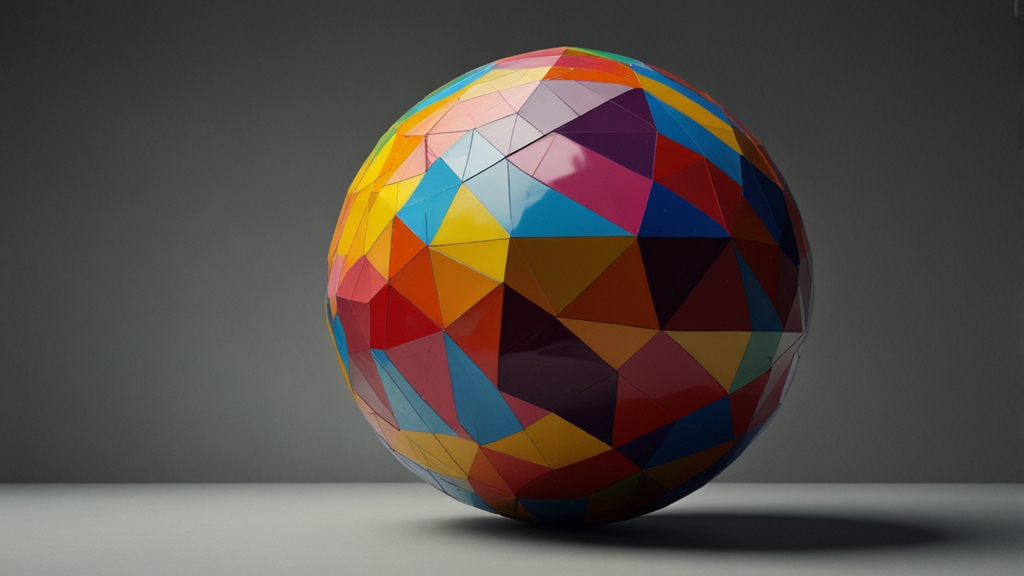The Geometry of Happiness: Finding Balance in Shapes
Happiness is often perceived as a fleeting emotion, influenced by external circumstances and internal state of mind. However, recent studies suggest that happiness can be cultivated through various life practices and perspectives. One such fascinating perspective is the relationship between geometry and emotional well-being. This might sound abstract, but the geometry of life essentially revolves around finding balance in shapes—both literal and metaphorical. In this exploration, we'll dive into how shapes and symmetry can lead us to a more balanced and fulfilling life.
The Symmetry of Self
At the heart of geometry lies symmetry. Symmetry is not just about perfect mirroring but is also about achieving balance. In personal well-being, symmetry can be seen as a balance between different life domains—work, relationships, and self-care. Maintaining a balanced life is akin to achieving symmetrical harmony in a geometric figure.
"Balance, in the end, is about giving equal weight to different areas of one's life. Like a well-crafted polygon, each side must contribute equally for true symmetry to exist."
The process of self-reflection is crucial here. By understanding the areas where we are giving too much or too little attention, we can create a more balanced life. Think of it as an ongoing recalibration, much like an artist who continually adjusts lines to get a symmetrical shape.
The Circle of Connection
Circles represent unity, inclusiveness, and continuous flow. In daily life, our social circles have a significant impact on our sense of happiness. Building a robust support network is similar to drawing a perfect circle; it requires a well-defined center point and consistent, even strokes around it.
"Your relationships are the center point of your life's circle. Strong, healthy connections allow you to draw a circle that expands, adding to your sense of well-being."
Investing time and effort in meaningful relationships creates a supportive, unbroken circle of trust and love. It’s essential to nurture these bonds continuously, ensuring that the circle remains whole and unbroken, as any break can disrupt the overall harmony of our lives.
Triangles of Growth
Triangles are the simplest geometric shapes that signify strength and stability. In personal development, the three sides can represent physical health, mental health, and spiritual well-being. Each side is crucial for the triangle to hold its shape, indicating that neglecting any one aspect can destabilize our overall well-being.
To build a strong triangle of personal growth, we need to focus equally on these three areas. Regular physical activity, mental stimulation through learning, and spiritual practices such as meditation or prayer contribute to a stable and balanced life.
The Complex Beauty of Fractals
Fractals are complex shapes that exhibit self-similarity at different scales. They show how complex patterns can arise from simple rules and can be a metaphor for life itself. The small, everyday habits we cultivate eventually form the larger patterns of our lives. Whether beneficial or detrimental, these patterns deeply influence our overall sense of happiness.
By focusing on positive habits and self-improvement, we can create fractals of happiness that grow increasingly complex and beautiful over time. Each small act of kindness, each moment of self-care, builds towards a larger, more fulfilling life pattern.
Conclusion
Much like the precise measurements and balances in geometry, our pursuit of happiness requires us to carefully balance various aspects of our lives. By drawing inspiration from geometric shapes and their properties, we can create a harmonious and well-rounded existence. Whether it’s through achieving symmetry in our daily routines, expanding our social circles, or building a strong triangle of personal growth, each shape can guide us towards a balanced and happier life.
In the end, the geometry of happiness lies not in perfection but in the continuous quest for balance and harmony. Just as in geometry, small adjustments can make significant differences. So, let’s strive to find balance in shapes and, in doing so, unlock the deeper dimensions of happiness.









